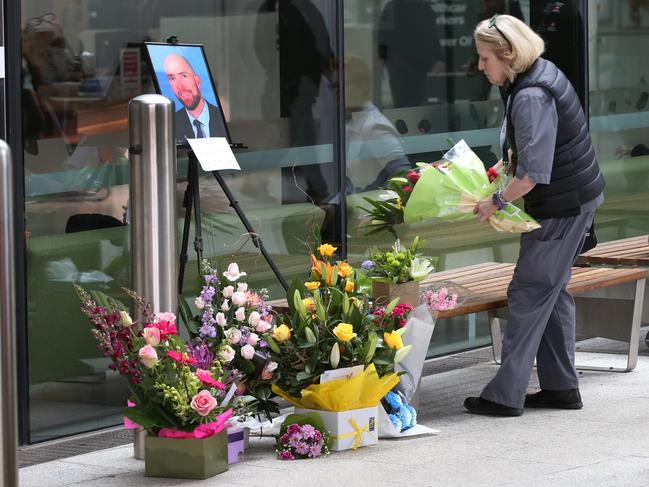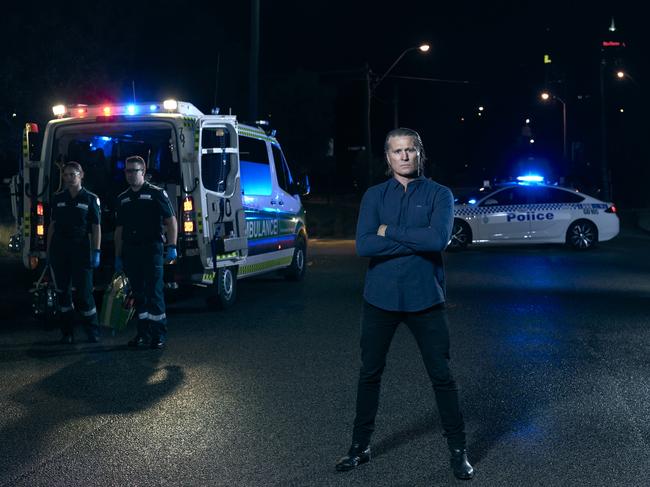Men in their 20s the most likely coward punch killers, study reveals
The legislation was introduced more than a decade ago, so why are so few offenders being charged under coward punch laws?

Victoria
Don't miss out on the headlines from Victoria. Followed categories will be added to My News.
Devastated families of victims killed in coward punch attacks are demanding Victoria’s laws be tightened, as new research reveals few offenders have been sentenced under the legislation.
The research by Monash University and the Victorian Institute of Forensic Medicine found it was “extremely difficult” in Victoria for the prosecution to prove three crucial points of the coward punch laws introduced in 2014.
These are that the perpetrator intended to punch the victim, that they knew the victim was not expecting the punch, and that the punch was the direct cause of a victim’s death.
The only killer to be sentenced under Victoria’s one-punch laws was Joseph Esmaili, who was given a 10 year non-parole period for the manslaughter of heart surgeon Patrick Pritzwald-Stegmann – who died after Esmaili punched him in the head at Box Hill Hospital in 2017.
Senior author Monash University Associate Professor Jennifer Schumann said the team was surprised by the “low proportion of cases where the perpetrator was convicted using the coward punch specific legislation”.
Matt Cronin, the father of 19-year-old Patrick Cronin, who died after being punched in the head while trying to pull his friend out of a pub brawl in 2016, told the Herald Sun the current laws were “totally ineffective”.

“Change the law – get rid of those clauses and just say, did you hit someone in the head and did they die? And if they did, then that’s 10 years minimum,” he said.
Mr Cronin’s killer, Andrew William Lee, was sentenced to eight years’ jail after pleading guilty to manslaughter to have a murder charge downgraded.
Since the laws were introduced in Victoria, the researchers said more than half of offenders were charged with manslaughter in fatal incidents of coward punch.
While offenders are charged with manslaughter, the one-punch laws come into play at a later stage in court, once an offender is found or has pleaded guilty to manslaughter, then raising the possibility of a mandatory 10-year minimum jail term.
Coward punch usually describes a single punch to the face, neck, or head, causing the victim to fall and sustain further head injuries from striking the ground or a hard surface.
David Cassai died after he was struck in the head on New Year’s Eve in 2012.
In 2017, Richard Andrew Vincec fatally punched 22-year-old Jaiden Walker after leaving Cherry Bar in AC/DC Lane in Melbourne’s CBD.
Luke Francis, 29, died after Tyson Armstrong, 29, fatally punched him in the casino’s food court in March 2022.


Mr Cronin said: “My heart just breaks for (other) families because I know what’s going to be the outcome. It’ll be a cookie cutter eight use with five year minimum”.
Mr Cassai’s mother, Caterina Politi, whose STOP. One Punch Can Kill campaign was central to the introduction of the Coward Punch Law after his death, said the elements of the law that required proving the victim was not expecting to be punched and that the offender knew they wouldn’t see the punch coming should be scrapped.
“The law as it is written makes it difficult to prove all the criteria,” she said.
She said the law would be more effective if it was enacted more often, but believed prosecutors shied away from pushing for the 10-year sentence.
“Prosecutors prefer the manslaughter charge, mandatory minimum laws are not liked by the judiciary,” she said.
Mr Francis’ mother Michelle Harris said: “The one punch laws in Victoria absolutely need to be reviewed”.
“Our case should have been a clear, open and shut case of a coward punch but was instead charged as manslaughter.
“Even our judge, who did the best he could for us, asked the prosecution why this was not a coward punch case – they said it was ‘too hard to prove’ that the punch killed him despite clear CCTV footage from multiple angles showing what happened.”

The Herald Sun understands that several of the victims’ families have met with multiple attorneys-general in recent years about tightening the laws, but no changes have been made.
Professor Schumann said Victoria was the only state that required the need to prove foreseeability and intent and the punch being directly the cause in the victim’s death, describing it as a “huge burden” for prosecutors.
Professor Schumann, who also heads the Drug Intelligence Unit at the Victorian Institute of Forensic Medicine, said it also meant a massive under representation of the true number of coward punch assaults nationally.
“These laws have been designed as a positive move in policy to try and deter perpetrators and seek justice for their victims, (but) they’re not having their desired effects with such a low proportion convicted under these specific laws,” she said.
The study, published in the Medicine, Science and the Law journal, is the first to profile coward punch offenders, the circumstances of the incidents and the judicial outcomes over three decades.
The team looked at 287 convictions and found:
– MOST offenders were male, aged around 26
– ALCOHOL was a factor in 39 per cent of cases, illicit drugs less than 2 two per cent and there was no substance abuse in nearly 20 per cent of cases
– MOST coward punch cases were prosecuted in Victoria and New South Wales
– 62 per cent of offenders convicted under the coward punch law received prison sentences
– 19.5 per cent were given community-based sentences
– 65 per cent occurred in public places, predominantly between 6pm and 6am
The study also highlighted that legal responses to coward punch incidents vary across Australia.
Specific laws were introduced in Western Australia (2008), the Northern Territory (2012), and Victoria, Queensland, and New South Wales in 2014. However, similar laws are not in place in South Australia, the Australian Capital Territory, or Tasmania.
Professor Schumann said understanding the characteristics and outcomes of these cases can help shape more effective legal and public health strategies to prevent such tragedies.
The study was funded by the Stop the Coward Punch Campaign, established by champion boxer Danny Green. Mr Green said changing the terminology to describe the attacks as a coward punch was important.
More Coverage
Originally published as Men in their 20s the most likely coward punch killers, study reveals




